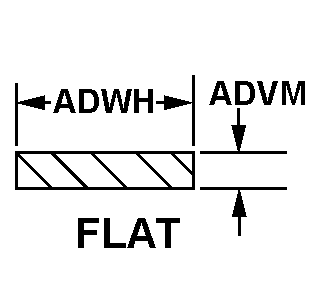9530012026333
Price Quote Get an up to date pricing and availability quote for this product. Order online or over the phone.
Quality Commitment
Serving our customers with quality and safety first.
- AS9120 Certified
- Audited supply chain
- ITAR Registered
- DDTC Registered
- HAZMAT Certified
- Customer service objectives
- Every product 100% inspected

9530-01-202-6333 Specification Set by the OEM (see RNCC code 3)
extruded
12.000 feet
1.7500in.
2.500in.
flat
aircraft
solution treated
aluminum alloy 6061 or aluminum alloy 6062
QQ-A-200/8 fed spec 1st material response
any acceptable end
81348-QQ-A-200/8 government specification
Cross Reference Parts Part numbers that meet the specification outlined on this page and set by the OEM
Identification Item Identification Guide (IIG) and Item Name Code (INC)

Definition Definition of approved item name (AIN): "BAR,METAL"
A metallic product of ferrous or nonferrous material. It is produced as a solid section in straight lengths or short barlike forms of cored or solid cross section. It may be round, square, hexagon, oval, half-oval, or half-round shape whose width, diameter, or distance between parallel faces is 3/8 inch or 10.0mm or greater. Rectangular shape cross-sectional dimensions are limited to those established in appendix c, fiig a131. It is round to a maximum diameter of 24 inches or 610.0mm. For a rectangular shape less than 3/32 inch or 2.5mm thickness, see wire (1), nonelectrical.
9530-01-202-6333 Material Hazmat, Precious Metals, Criticality, Enviroment, and ESD
Indicates there is no data in the hmirs and the nsn is in a fsc not generally suspected of containing hazardous materials.
Item does not contain precious metal.
Represents items with no adp components
The item does not have a nuclear hardened feature or any other critical feature such as tolerance, fit restriction or application.
Identification Codes
HMIC: Hazardous Material Indicator Code. A one position code that identifies a hazardous item.
PMIC: Precious Metal Indicator Code. A one position code which identifies items that have precious metals as part of their content. precious metals are those metals generally considered to be uncommon, highly valuable, and relatively superior in certain properties such as resistance to corrosion and electrical conductivity.
ESD: Electrostatic Discharge. Indicates if an item is susceptible to electrostatic discharge or electromagnetic interference damage. electrostatic discharge damage occurs when an accumulation of static electricity generated by the relative motion or separation of materials is released to another item by direct contact. electromagnetic interference damage occurs when an item comes into proximity with an electrostatic or magnetic field.
ENAC: Enviromental Attribute Code. Identifies items with environmentally preferred characteristics.
CRITL: Criticality Indicator Code. Indicates an item is technically critical by tolerance, fit, application, nuclear hardness properties, or other characteristics.






